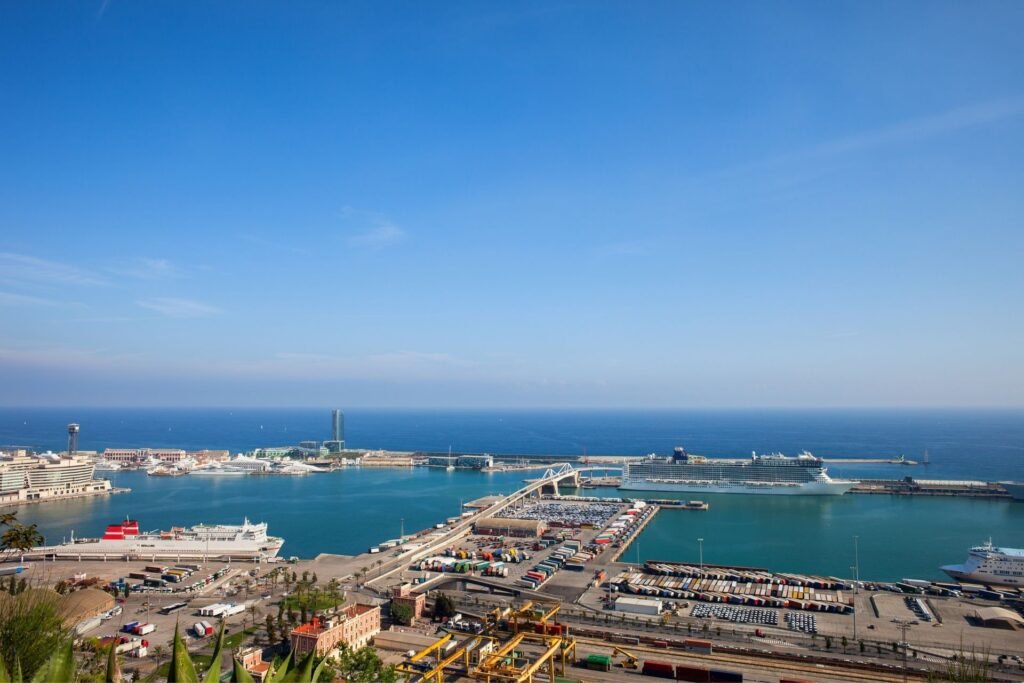Europe’s Busiest Cruise Port Cuts Daily Capacity to Combat Overtourism
Barcelona’s Port, the Mediterranean’s cruise capital, faces an unprecedented challenge. The city recorded a 21% increase in cruise ship calls and a 20% rise in passengers to 1.2 million people in January-May this year from the same period in 2024, forcing authorities to take dramatic action against what locals call “cruise ship invasion.”
The numbers tell a sobering story. What began as a tourism success has morphed into an urban crisis. Barcelona handled approximately 3.6 million cruise passengers in 2023, with ships now accounting for 83% of all maritime traffic. The Catalonian capital has become a victim of its own appeal, drowning under waves of day-trippers who flood its narrow Gothic Quarter streets, overrun the famous Las Ramblas, and disappear before sunset without contributing meaningfully to the local economy.
The Port Authority’s response represents one of Europe’s boldest attempts to regulate cruise tourism. The number of cruise terminals will be reduced from seven to five by 2030, while daily passenger capacity drops from 37,000 to 31,000. Three existing terminals will be combined into a single facility, creating what officials describe as “more controlled and sustainable” arrivals.
This isn’t merely about numbers. Barcelona’s transformation into a cruise megaport has fundamentally altered the city’s character. The medieval Barrio Gótico, designed for medieval foot traffic, now struggles under the weight of thousands of tourists wielding selfie sticks and following umbrella-wielding guides. Local businesses complain that cruise passengers, with limited time ashore, gravitate toward cheap souvenir shops and fast-food chains rather than authentic Catalonian restaurants and boutiques.
The city’s strategy reveals sophisticated thinking about tourism economics. The port will prioritize cruise ships that use Barcelona as their home port for departures and arrivals and encourage tourists to stay longer and spend more in the city. This approach favors “turnaround” passengers who book hotels, dine at restaurants, and explore beyond the tourist traps, over “transit” passengers who disembark for a few hours before sailing to their next destination.

Environmental concerns add another layer to Barcelona’s cruise dilemma. The port redevelopment plan includes the construction of a new, sustainable Terminal C, with shore power and expanded capacity for 7,000 passengers, addressing criticism about the massive ships’ carbon footprint and air pollution when docked.
The infrastructure changes extend beyond terminal consolidation. The World Trade Center’s Southern Terminal (Barcelona Sud) is expected to be closed down by 2026, while new restrictions limit the number of ships permitted to dock simultaneously. These measures aim to eliminate the spectacle of multiple massive vessels dominating Barcelona’s waterfront like floating skyscrapers.
Barcelona’s actions reflect a broader Mediterranean awakening to cruise tourism’s double-edged nature. Politicians in Spain have also proposed stricter rules surrounding taxation and the use of polluting fuels by cruise ships, while other popular ports from Dubrovnik to Santorini implement similar capacity restrictions.
The economic calculation behind these limits challenges conventional tourism wisdom. While reducing passenger numbers might seem counterintuitive, Barcelona officials argue that quality trumps quantity. Extended-stay visitors spend significantly more per person than day-trippers, support local employment beyond the service sector, and contribute to the city’s cultural vitality rather than merely consuming it.
Yet the transition poses risks. The cruise industry generates substantial revenue for port operations, maritime services, and tourism infrastructure. Reducing capacity could push cruise lines toward alternative ports like Valencia or Marseille, potentially costing Barcelona its status as the Mediterranean’s cruise hub.
The success of Barcelona’s experiment will likely influence cruise tourism policy across Europe. If the city can maintain its economic benefits while reducing overtourism’s negative impacts, it could provide a blueprint for other destinations struggling with similar challenges. However, if the capacity restrictions prove economically damaging without meaningfully improving quality of life for residents, the backlash could swing policy in the opposite direction.
Barcelona’s cruise port revolution represents more than transportation policy—it’s an attempt to redefine the relationship between tourism and urban life in the 21st century. Whether this bold experiment succeeds or fails will shape how cities worldwide balance economic opportunity with livability in our increasingly connected world.
The ultimate test won’t be passenger statistics or revenue figures, but whether Barcelona can preserve what made millions want to visit in the first place: its authentic Catalonian character, vibrant neighborhoods, and quality of life that extends beyond the tourist zones. The cruise industry has brought the world to Barcelona’s doorstep. Now the city must decide how many visitors it can welcome without losing its soul.
If you liked this article, check the other ones on Majestic Mondo website. Consider joining the Instagram community as well, to fully enjoy the beauty of our planet.




Leave a Reply